The ancient Christians who exercised a powerful influence on the life of the Church reach across the ages to contemporary Catholics, offering ‘a timely witness’
For the Fathers — teachers like Clement, Justin, Irenaeus, Athanasius, Augustine — have exercised a mighty influence on the Church’s life, not only in their own day, but down to our own. The Catechism of the Catholic Church describes the Fathers as “always timely witnesses” to the Church’s tradition (No. 688).
And there’s further reason to bet on their appeal. Consider how often, in recent years, ancient Christianity has proved a draw at the box office and the bookstores, in offerings as varied as “The Passion of the Christ,” “The Gospel of Judas,” “The Da Vinci Code” and the so-called Family of Jesus tomb.
People have demonstrated a powerful curiosity about early Christianity, and the giants of the early Christian era were the Fathers of the Church.
Mike Aquilina
Preservers of doctrine
Indeed, Christians have always honored their ancestors with the title of “Fathers.” They did this in imitation of Jesus and Jewish custom (see Jn 6:31,49). St. Peter uses the same Greek word, pateres, to describe the first generation of Christians (see 2 Pt 3:4). Those who held authority in the Church, from the very beginning, considered themselves to be “Fathers” to their congregations. We find this idea in St. Paul, who reminds the Corinthians that he is their “father in Christ Jesus” (1 Cor 4:15), as well as in St. John (see 3 Jn 4). Those who later inherited the office of the apostles — the bishops — would also inherit the paternal role in God’s earthly family. They would be Fathers of the Church.
And one of the marks of the Fathers is their reverence for the doctrine passed on from the apostles. The Fathers preserved, preached and passed on the rule of faith — the Gospel of Jesus Christ, the moral counsel of the apostles and the sacred rites of the Church, the sacraments. They viewed this body of doctrine as a patrimony, a sacred trust. Thus they were not given to experimentation, and they looked askance at innovation. “Whoever interprets [the Scriptures] according to his own perverse inclinations,” wrote St. Polycarp about A.D.110, “is the firstborn of Satan. Let us dismiss the vanities of the crowd and false doctrines, and return to the teaching given to us from the beginning.”
Polycarp speaks with powerful authority, for he was himself a hearer of the apostles, a disciple of St. John. Polycarp was also the master of the most illustrious teacher of the next generation, the brilliant and prolific bishop St. Irenaeus of Lyons. Irenaeus wrote of his teacher: “He only taught what he received from the apostles, what the Church transmitted and what alone is true.”
Study of the Fathers
Irenaeus’ influence extended to St. Hippolytus in the next generation and then on to many others. At the end of Irenaeus’ life, we have not yet arrived at the year 200. And yet the Church’s pattern of invoking, studying and honoring the Fathers was already well established.
When a bishop or a council made a public statement about a doctrine or practice, it often included an appeal to precedents in the witness of “the holy Fathers.” Sometimes, churchmen would make a chain (Latin, catena) of such precedents, with quotations representing every generation between their own and that of the apostles. Thus they would demonstrate the pure pedigree of their own teaching.
The study of the Fathers grew increasingly important, then, as the decades and the centuries wore on. Churches took care to preserve the paper trail of their own heritage. Some, like the Syrian city of Edessa, created vast archives. The historian Eusebius, conducting his research in the late third century, was able to take advantage of several of these collections. In the fourth and fifth centuries, monastic communities would also begin to preserve the traditions of their “Fathers” in writing; and so we have inherited many anthologies of the lives and sayings of the so-called Desert Fathers.
Around the same time, at the end of the fourth century, St. Jerome set out to write a biographical encyclopedia of ancient Christianity. He called it “On Illustrious Men”; and with his profiles of individual writers, he included bibliographies as well. Jerome’s book, like Eusebius’, became a standard reference work for later study of the Fathers.
Differing interpretations
In A.D. 434, a monk in Gaul (modern France) set down rules for the study of the Fathers. His name was Vincent of Lerins, and he would himself one day be honored as a Church Father. His guidelines have become a byword in theology. They are known as the “Vincentian Canon.”
“Now in the Catholic Church,” writes Vincent, “we take the greatest care to hold that which has been believed everywhere, always and by all. …We hold to this rule if we follow universality, antiquity and consensus. We follow universality if we acknowledge that one faith to be true which the whole Church throughout the world confesses; antiquity, if we in no way depart from those interpretations that our ancestors and fathers clearly proclaimed; consensus, if we keep following the definitions and opinions of all — or nearly all — the bishops and teachers of antiquity.”
Through much of Christian history, the study of “the Fathers” meant the study of all our theological ancestors — no matter how remote or recent. In the 13th century, St. Thomas Aquinas, for example, often cited the ancients — both the Greek and Latin Fathers — and indeed he committed some of their works to memory. But he also counted as “Fathers” the great teachers of the generation immediately before him.
It was only with the 15th-century Protestant Reformation, however, that scholars began to narrow the scope of the study of the Fathers. It was a necessary consequence of the nature of the Reformation. Martin Luther and John Calvin claimed that their movements were not novelties, but retrievals of the most ancient faith — the faith of the New Testament. Both men often cited texts of the Fathers to buttress their arguments. But Luther especially was ambivalent about the Fathers. He charged that they “often erred,” and he acknowledged that some of his own doctrines could not be reconciled with a consensus of the Fathers. For the first time in history, a theologian was arguing that Scripture opposed the collective witness of all his ancestors in the faith.
Yet the Fathers themselves claimed only to be passing on the interpretation of Scripture that they had received from the apostles. So, the argument was really about biblical interpretation, and the Fathers provided a valuable witness, a perspective that was closer to the time and culture of Jesus Christ than any speculation of the late Middle Ages. At first, both Protestants and Catholics hoped to marshal the Fathers as evidence for their theological positions. Erasmus — Luther’s sometime foil and sometime friend — published translations of Ambrose, Augustine, Basil, John Chrysostom and Jerome.
Before long, the study of the Fathers became a thriving academic specialty, called “patrology” or “patristics,” from that same Greek word used in the New Testament, pateres.
Winning over converts
In the 19th century, the English-speaking world enjoyed an abundant harvest from the field of patristics. There arose in the Church of England another retrieval movement, this time including the Fathers in its purview. They called themselves the Tractarians, after the controversial religious tracts they published. They would eventually become known as the Oxford Movement, for the university where many of them taught, and their influence extended far.
At mid-century, some of the movement’s leaders converted to Catholicism, most notably Cardinal John Henry Newman. His last work as an Anglican, “An Essay on the Development of Catholic Doctrine,” really details how the Fathers led him to the fullness of Catholic faith: “of all existing systems,” he concluded, “the present communion of Rome is the nearest approximation in fact to the Church of the Fathers … Did St. Athanasius or St. Ambrose come suddenly to life, it cannot be doubted what communion he would take to be his own.”
Reading the Fathers has led many other patristic scholars and Protestant clergymen to the same conclusion — and to the same communion. In Cardinal Newman’s lifetime, there were many, including Thomas W. Allies and Henry Wilberforce.
In the 20th century, there were many more, including Louis Bouyer and, very recently, the dean of America’s Church historians, Robert Louis Wilken.
Speaking across the centuries
In the last 50 years, there has been a great flowering of patristic scholarship in the United States. It began, really, when some of the great European scholars fled here from Nazi and communist persecution. From their academic work came a wealth of publications.
There are currently three extensive series of translations of the Church Fathers available in English. Two arose simultaneously at mid-20th century and continue to publish volumes every year: the Ancient Christian Writers series (currently published by Paulist Press) and the Fathers of the Church (published by Catholic University of America).
Two Protestant series from the 19th century — the Ante-Nicene Fathers and the Nicene and Post-Nicene Fathers — are available in a reprint edition from Hendrickson, an evangelical publisher. A smaller set, the Popular Patristics series, is published by the Orthodox St. Vladimir’s Seminary Press.
Two Protestant publishers have recently launched series that focus exclusively on the Fathers’ biblical interpretation. The first out of the gate was the Ancient Christian Commentary, edited by Methodist scholar Thomas Oden and published by InterVarsity Press. The second, called The Church’s Bible, is published by Eerdmans and edited by Robert Louis Wilken.
The literature about the Fathers is simply too vast to mention. And there’s no shortage of good books aimed at ordinary Catholics who are put off by scholarly tomes.
Over the past 20 years, hundreds of Protestant clergy, in the United States alone, have experienced the “catholicizing” influence of the Fathers and entered full communion with the Catholic Church. High-profile converts include Scott Hahn, Marcus Grodi and Alex Jones, among others. Grodi’s apostolate, the Coming Home Network, has made patristics the bedrock of its apologetic efforts. And his own catchphrase, “Deep in History,” is straight from Cardinal Newman.
Sooner or later, every thinking Christian discovers the duty to study the Fathers. It presents itself as a matter of religious literacy, if not a debt of family honor. They fought the first culture wars; we should at least learn from them. Many of them died to preserve and preach our faith; we should at least remember them with gratitude.
Non-Catholics turn to them increasingly for insight into Scripture — but then it’s hard to ignore the Fathers’ biblical reflections on the Mass, the papacy, veneration of the saints and other Catholic distinctives. They are indeed — as the Catechism put it — “always timely witnesses” to Catholic tradition, and their witness is invaluable today.
Who Are the Fathers?
Not every Christian who wrote in antiquity is considered a Church Father. Theologians have settled on four criteria that must be fulfilled:
Sound doctrine.
Holiness of life.
Church approval.
Antiquity.
Those ancient Christians who don’t meet all these criteria are often described as “ecclesiastical writers” rather than Church Fathers.
Still, there is no official list of the Fathers, no process of canonization similar to a cause for sainthood. The ancient list attributed to Pope Gelasius is of uncertain origin; and, in any event, it was drawn up while the age of the Fathers was still in progress, so it misses some important later figures.
Some scholars say that Tertullian, Origen and Eusebius should be called “ecclesiastical writers” rather than Fathers. Tertullian veered off into the Montanist heresy late in life. Origen seems to have experimented with several weird theological notions. Eusebius was a bit too cozy with the most notorious heretics of the fourth century, the Arians.
Yet recent reconsiderations have been kind to those three men. The Catechism of the Catholic Church cites Tertullian explicitly as a Father of the Church (see <[lb]>No. 1446) and nine times invokes Origen as an authority. A French scholar summed up the matter: “The valuable services that these men have rendered to the Church” make them “exceptions.”
Some early authors would use the word “Father” only to describe a bishop, but eventually the term was extended to priests (like Jerome) and laymen (like Justin).
Listening to our Fathers
The works of the Fathers, unlike the books of the Bible, are neither inspired nor inerrant; and, unlike the popes, the Fathers do not teach infallibly. In fact, they often disagree with one another, and some of them didn’t get along very well. St. Jerome argued against St. John Chrysostom; St. Jerome argued with St. Augustine; St. Jerome accused St. Ambrose of plagiarism. In fact, St. Jerome argued with almost everyone
When, however, there is a “consensus of the Fathers” on a particular doctrine or interpretation of Scripture, then the position of the Fathers must be held as true.
Where are the Mothers?
Were there “Mothers of the Church”? Well, yes and no.
We possess very few writings by women from the ancient world. Christian women are probably slightly better represented than their pagan counterparts. The many collections of “Sayings of the Desert Fathers” actually include proverbs by women ascetics, who are called “Amma,” or “Mother.”
St. John Chrysostom (fifth century) carried on extensive correspondence with an abbess named Olympias, but her letters have not survived. His contemporary St. Jerome corresponded with many holy and scholarly women; but again, we have mostly Jerome’s end of the conversation.
Tertullian preserved the words of the martyrs Perpetua and Felicity. In the late fourth century, St. Gregory of Nyssa wrote a profoundly moving biography of his sister St. Macrina.
Their contemporaries honored these women as maternal figures. The Church has always honored them as saints. There is no custom of calling them “Mothers of the Church,” but there is no reason why individual Christians might not revere them as such.
Mass of the Early Christians
The Fathers’ reverence for the Eucharist was profound. In the third century, Origen noted that when his hearers “receive the Body of the Lord, you guard it with all care and reverence lest any small part should fall from it, lest any piece of the consecrated gift be lost.” In the fourth century, Cyril of Jerusalem exhorted his people. “Tell me, if anyone gave you grains of gold, would you not hold them with utmost care, on guard against losing any? Will you not take greater care not to lose a crumb of what is more precious than gold or jewels?”
That reverence extended to the liturgical vessels as well, which were always made of the finest materials the local Church could afford. Origen’s African contemporary Tertullian described chalices richly decorated with images of Christ. And in the midst of the last persecution, in 303, a Roman court in North Africa recorded that the following items had been confiscated from a church: two golden chalices, six silver chalices, six silver dishes, a silver bowl, seven silver lamps, two torches, seven short bronze lamp stands with their lamps and 11 bronze lamps on chains.
In the following century, St. Jerome would write of the need “to instruct by the authority of Scripture ignorant people in all the churches concerning the reverence with which they must handle holy things and minister at Christ’s altar; and to impress upon them that the sacred chalices, veils and other accessories used in the celebration of the Lord’s passion are not mere lifeless and senseless objects devoid of holiness, but that rather, from their association with the body and blood of the Lord, they are to be venerated with the same awe as the body and the blood themselves.”
This care for liturgical detail followed from the Church’s belief in the Real Presence. “For anyone who eats and drinks without discerning the body,” wrote St. Paul, “eats and drinks judgment upon himself” (1 Cor 11:29). Indeed, St. Ignatius of Antioch (writing in A.D. 107) said that the distinguishing mark of heretics was their denial of the Real Presence: “They abstain from the Eucharist and from prayer, because they do not confess the Eucharist to be the flesh of our Savior Jesus Christ.” St. Justin Martyr, four decades later, wrote that “the food blessed by the prayer of his word … is the flesh and blood of Jesus who was made flesh.”
The Fathers on the papacy
Writing in the late first century, St. Clement of Rome, the third successor of Peter, disciplined a faraway congregation in Greece. Clement could do this because he spoke with Peter’s authority, which was granted by Christ himself. As he concluded his letter, he urged the Corinthians to “render obedience unto the things written by us through the Holy Spirit.” And they did.
A century later, the Greek Church still revered Clement’s letter, as did other churches that counted it among the canonical scriptures and proclaimed its words in the liturgy.
Obedience to Christ in the person of his vicar — this is the common testimony of the Fathers. When the saints of East and West saw danger, they appealed to the pope. We find such pleas in the letters of St. Irenaeus (second century), St. Basil the Great (fourth century), St. John Chrysostom (early fifth century) and St. Cyril of Alexandria (mid-fifth century).
In the year 376, the greatest Scripture scholar in the ancient world, St. Jerome, addressed Pope St. Damasus I with a torrent of biblical symbols of the papacy: “I speak with the successor of the fisherman and disciple of the cross. Following none but Christ as my primate, I am united in communion with Your Beatitude — that is, with the chair of Peter. Upon that Rock I know the Church is built. Whosoever eats a lamb outside this house is profane. Whoever is not in Noah’s ark will perish when the flood prevails.”
Mike Aquilina

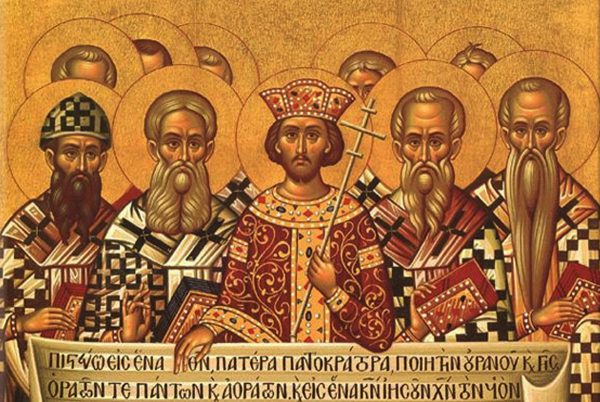
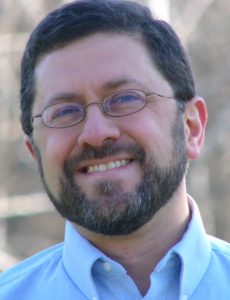


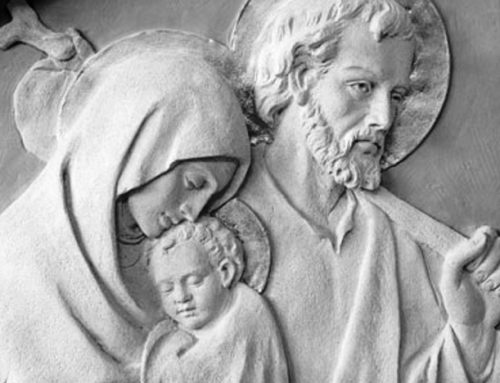
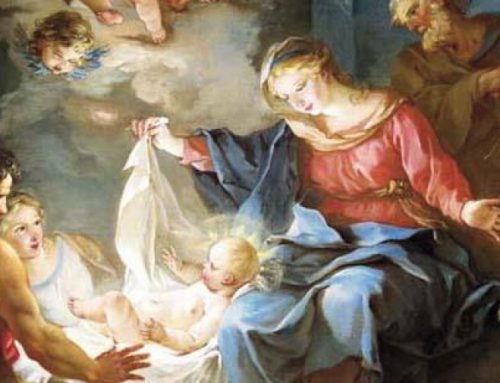

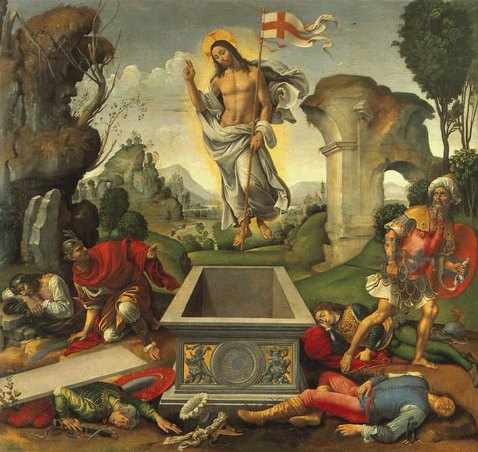
Leave A Comment
You must be logged in to post a comment.